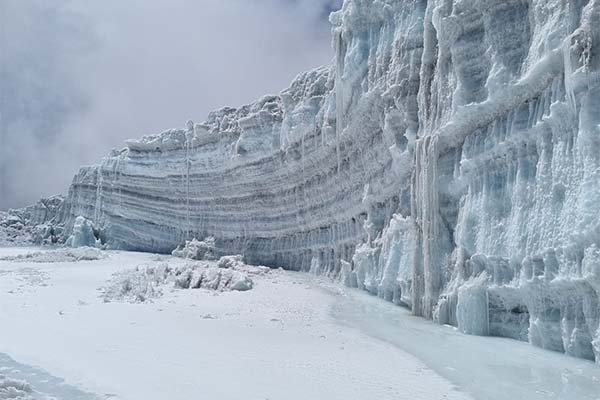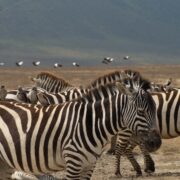
Why Kilimanjaro is a Natural Wonder
Why is Kilimanjaro in Tanzania Considered a Natural Wonder?
Kilimanjaro is considered a natural wonder as it’s no longer only a mountain; it’s a whole ecosystem in itself. It is Africa’s tallest mountain, standing tall in Tanzania. What makes it extra precise is its snow-capped pinnacle, that is a top-notch sight in Africa. However, beyond its top and snow, Kilimanjaro is home to several plants and animals that thrive in its considered one-of-a-kind weather zones, from lush rainforests to arid alpine deserts. It’s like a mini world of its very own, and this is why it’s celebrated as a natural wonder.
Why is Kilimanjaro a Natural Wonder?
Kilimanjaro in Tanzania is considered a natural wonder because:
Specific landscape: It’s Africa’s largest mountain and stands by itself, making it a prominent feature of the landscape.
Biodiversity: In spite of its tall top, Kilimanjaro hosts numerous ecosystems, from lush rainforests to alpine deserts, supporting a wide variety of plant and animal species.
Iconic Snow Cap: The snow-capped height is an unprecedented sight in Africa and adds to the mountain’s allure and strong points.
Cultural significance: Kilimanjaro is rich in cultural significance for neighborhood tribes, and its prominence in folklore and history adds to its wonder.
Difficult Ascent: Climbing Kilimanjaro is a huge challenge, drawing adventurers and thrill-seekers from around the globe, adding to its mystique and wonder.
Why mount Kilimanjaro is important to Tanzania?
Mount Kilimanjaro is important to Tanzania for several reasons. First, it’s an image of national satisfaction and identity, frequently featured in the country’s flags, logos, and currency. Second, it is a prime tourist attraction, drawing visitors from around the globe to Tanzania, which helps boost the economy through tourism sales and activity opportunities. Moreover, the mountain helps neighborhood communities by way of supplying resources which including water, fertile soil, and possibilities for agriculture and tourism-related companies. in the end, Kilimanjaro is large for its ecological variety, being home to numerous plant and animal species located nowhere else, contributing to Tanzania’s rich natural heritage.
What is the natural beauty of Tanzania?
Tanzania is filled with natural beauty! It has beautiful landscapes like sizable savannas, lush forests, and beautiful beaches. One of the most well-known points of interest is Mt. Kilimanjaro, Africa’s highest mountain. You may also discover an awesome natural world, such as lions, elephants, giraffes, and zebras, in places like Serengeti National Park and Ngorongoro Crater. Tanzania is also home to the breathtaking island of Zanzibar, acknowledged for its crystal-clear waters and white sandy beaches. Anywhere you appear in Tanzania, there may be something beautiful to look at!
Is Mount Kilimanjaro a natural wonder?
Mount Kilimanjaro is considered a natural wonder due to its magnificent size, lovely splendor, and specific environment. It’s the tallest mountain in Africa, status tall with its snow-capped top, even though it’s close to the equator where you would assume it to be hot. The mountain helps a selection of habitats, from lush rainforests to alpine deserts, making it a haven for diverse plant and animal existence. Its sheer presence and the demanding situations it gives to climbers make it a natural wonder famous to many.
Conclusion:
Kilimanjaro in Tanzania is taken into consideration as a natural wonder for numerous reasons. First off, it’s the tallest freestanding mountain in the world, growing majestically from the African plains. Its snow-capped top contrasts dramatically with the encompassing savannah, developing a beautiful natural spectacle.
Additionally, Kilimanjaro is domestic to a wide range of ecosystems, from lush rainforests to alpine deserts, supporting a variety of plant and animal species. Its rich biodiversity and particular microclimates make it an ecological marvel.
Moreover, Kilimanjaro holds cultural significance for the local people, serving as an image of national satisfaction and heritage. Its splendor and prominence have stimulated limitless myths, legends, and creative representations all throughout history.
Universal, Kilimanjaro’s awe-inspiring splendor, ecological importance, and cultural importance make it a natural wonder that captivates the hearts and minds of human beings around the world.
EXCELLENTVerified Awesome 4days Tanzania adventure lakes & culture safari I never saw the great safari with nature and culture before until a travel with Time for safari, it was incredible trip with nature and culture we having a time to visit lake manyara with a lot of birds and animals, was great time to experience hadzabe community culture we learned how they live and their daily activities not only that me and my wife we enjoy we we go lake natron good environment to watch all the time clear sight to see Mount ok doinyo lengai with it sand magical, visit the lake natron to see flamingos and experience maasai culture. Our driver is charming and spot everything first, Mkude make this trip to be the best of all our trip. Next will return Tanzania for this trip to see Tanzania adventure and cultureVerified We visited Mikumi national park it was so great for us with my friends under Time for safari with their great experience staffs We visit parks in Tanzania with my friends for holiday we served by Time for Safari, it is a unique company. You know how to care and appreciate their guests while providing services to the point that I feel like I am at home. Also you have an excellent team with high quality and professionalism in your work, excellent guides who was treat us like a member of their family. Mkude was our guide who was made us to feel our trip to be perfect with funny moments was made us to see our experience animals like Lion, elephant, groups of girrafe etc. You guys we really appreciate you and next time we will make sure for any safari in Tanzania we will book with Time for safari.
Recent Posts
Zanzibar Beaches: A Beach Lover’s Guide to Paradise
The Great Migration: Tanzania Safari Experience with Time for Safaris
Discovering Ngorongoro Crater National Park: Nature’s Masterpiece
All Categories

Thailand




